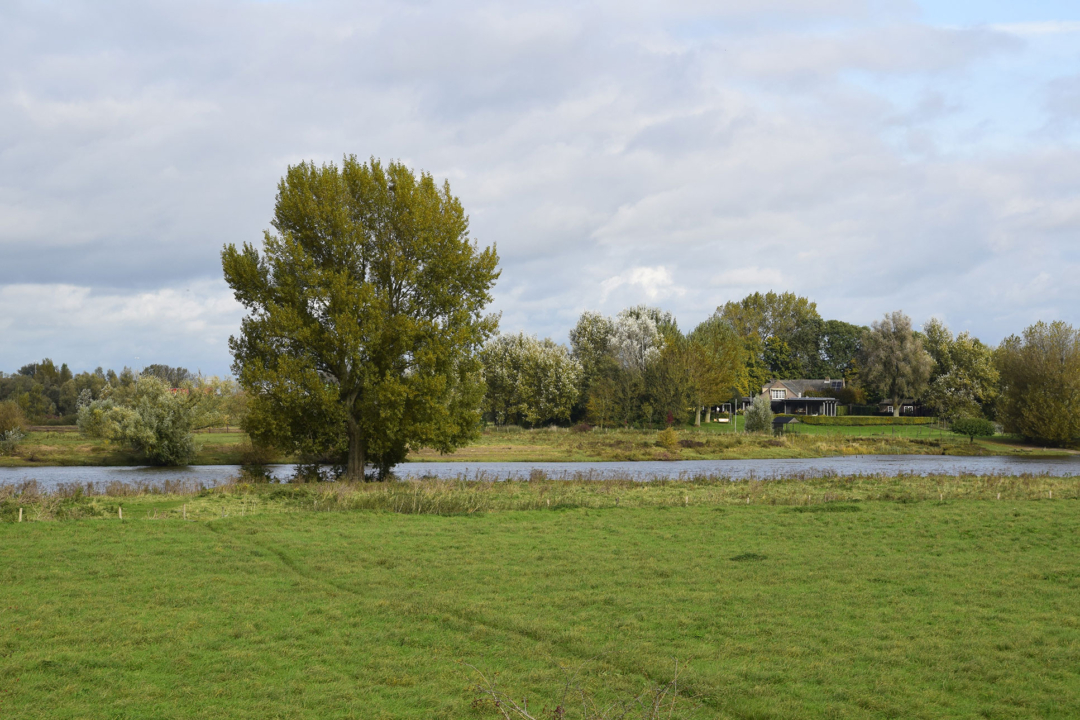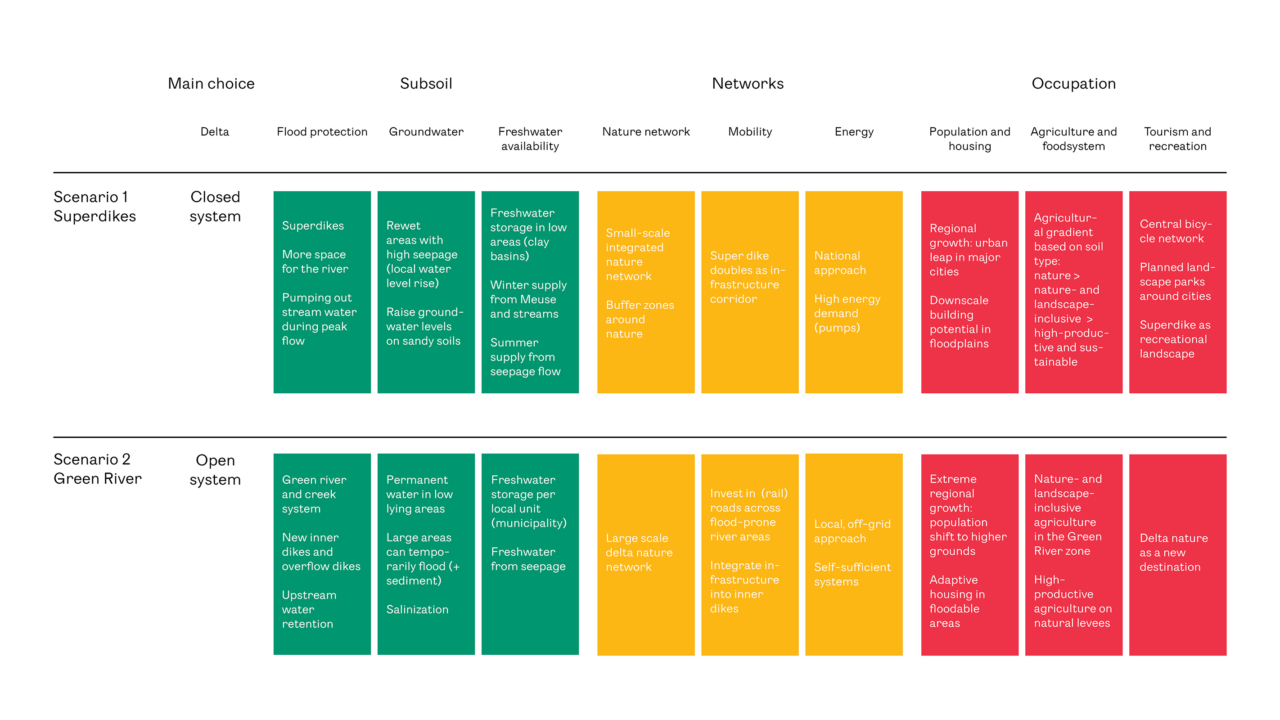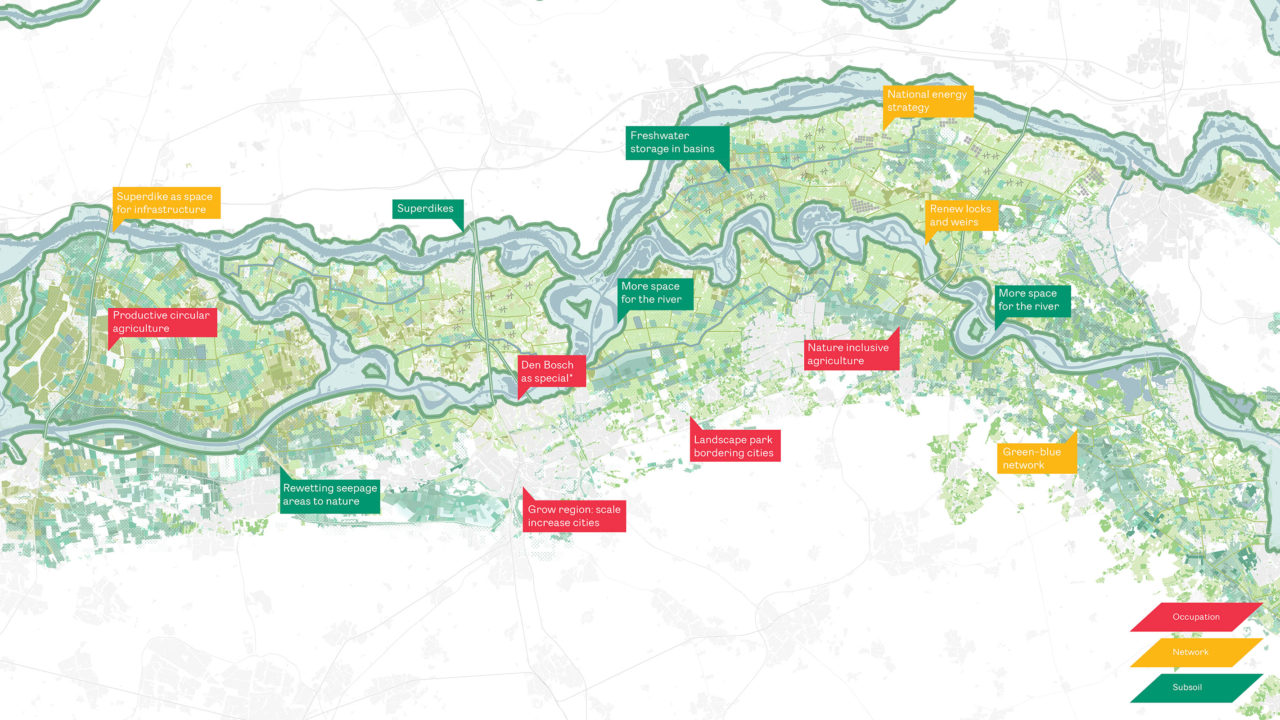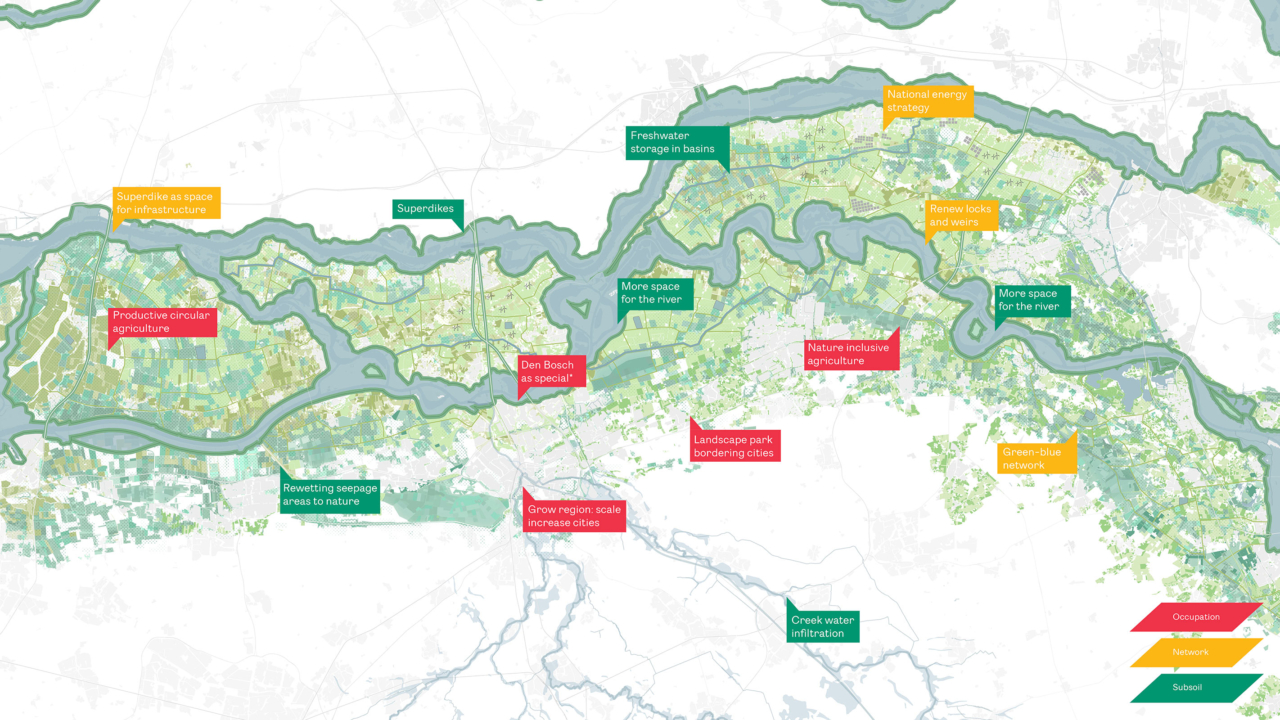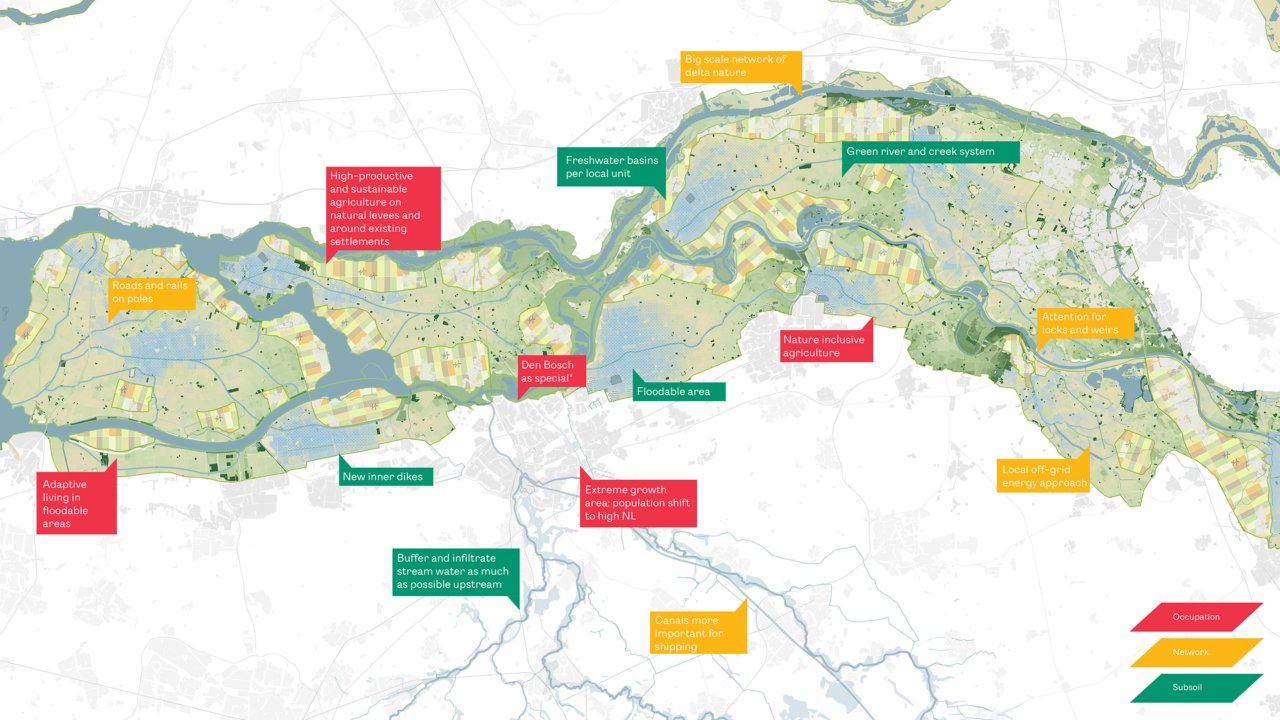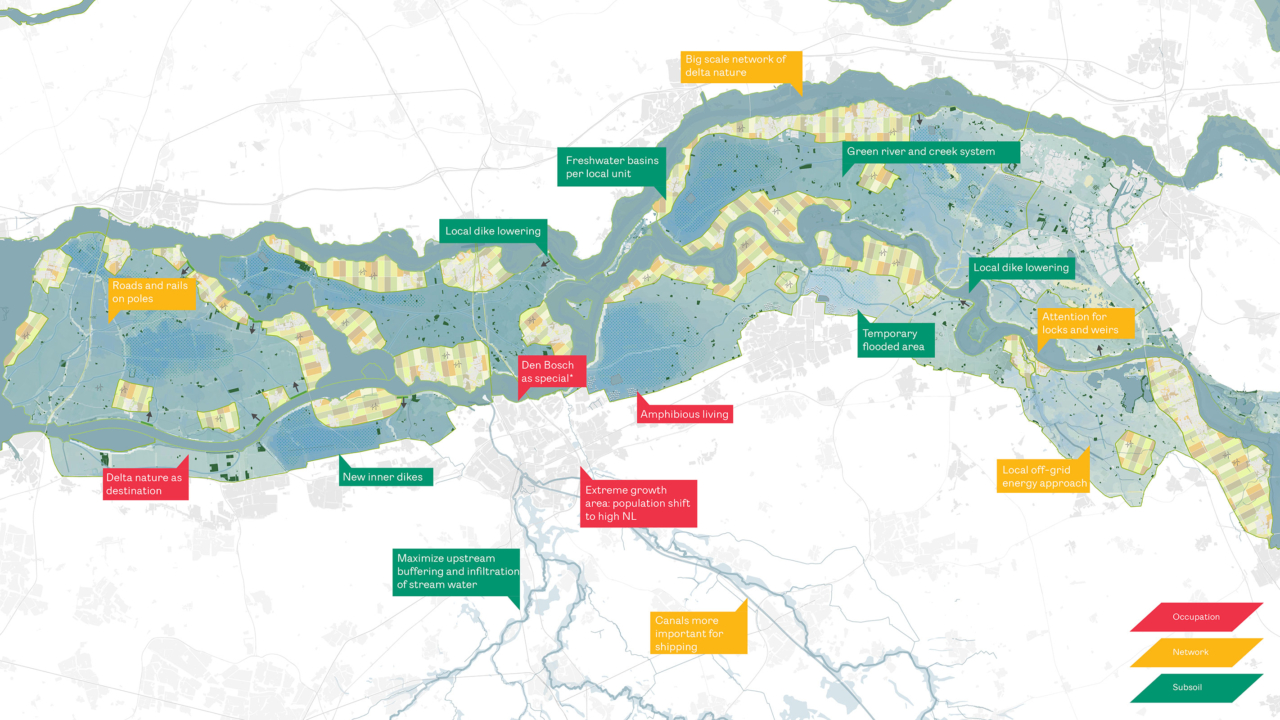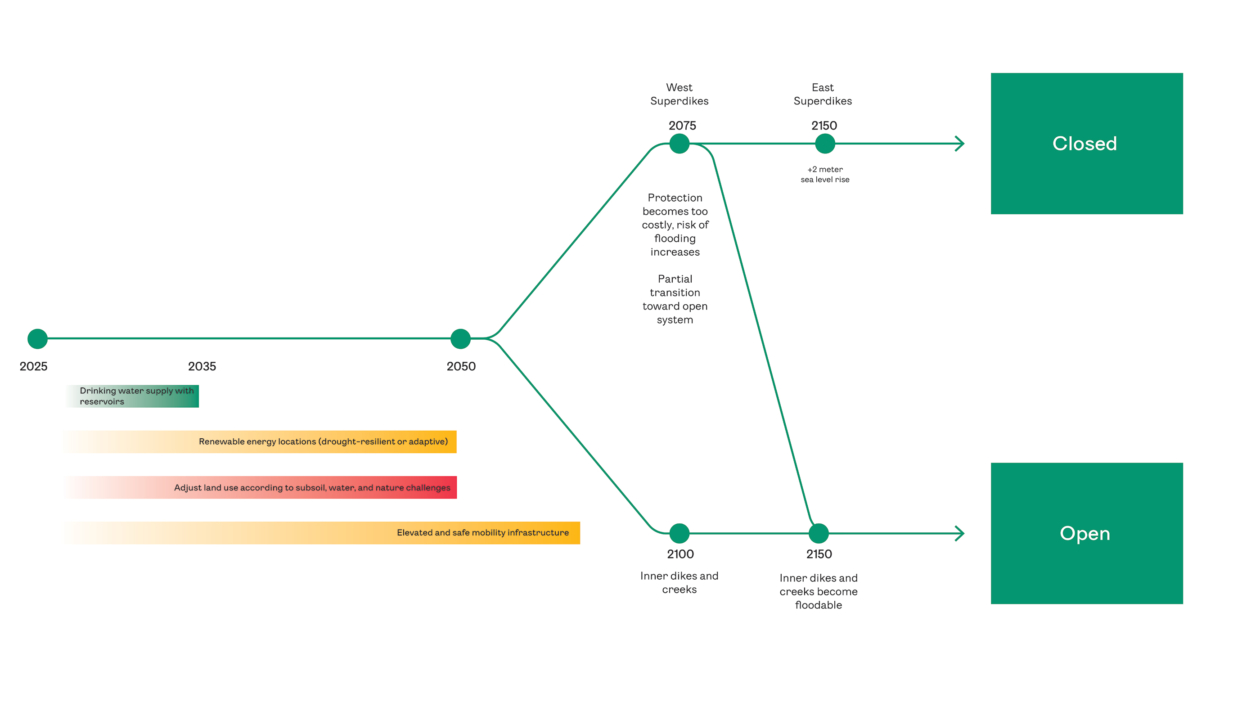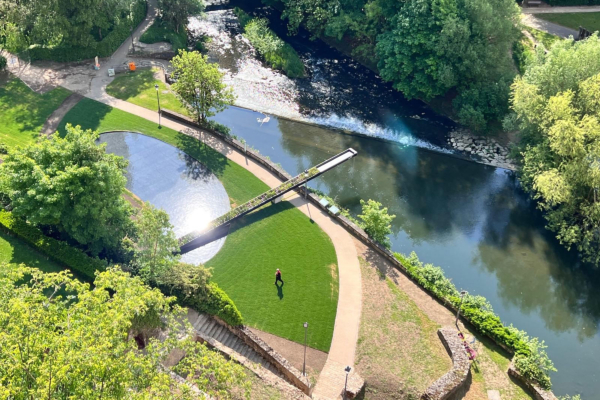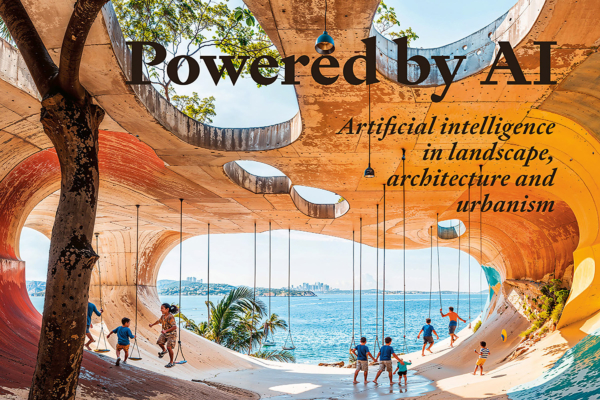Superdikes vs. Green River – Climate proofing The Brabant River Region
How can the river area of North-Brabant adapt to changing climate conditions, and which strategic decisions must be made in both the short and long term? Commissioned by the Province of North-Brabant, we explored how the landscape can remain safe, resilient, and attractive far beyond 2100. Our approach considers the landscape as an integrated system, where soil and water determine possibilities, rather than a sum of individual measures.
We developed two extreme scenarios for the distant future (>2100), based on the KNMI ’23 climate scenarios. One scenario focuses on drought conditions, while the other emphasizes increased wetness, with both scenarios accounting for extreme peaks in river discharge during both high and low water levels.
Scenario 1: Superdikes
This scenario envisions a technologically driven, closed system featuring superdikes measuring 90 to 150 meters wide, powerful pumping systems, and strategic river expansions where urban bottlenecks arise. Strong central governance is essential to ensure maximum water safety.
